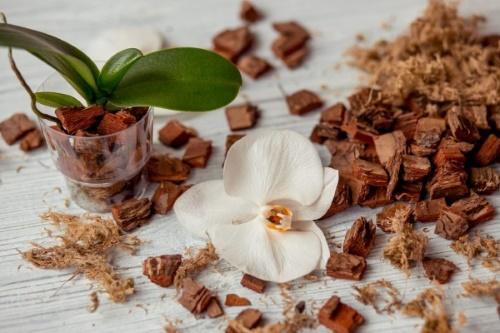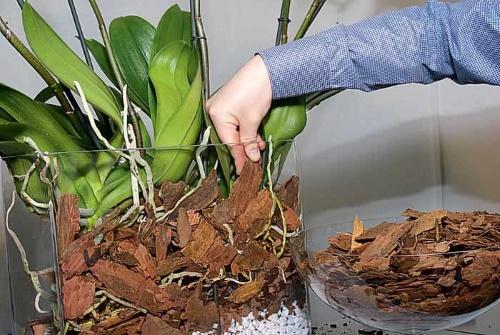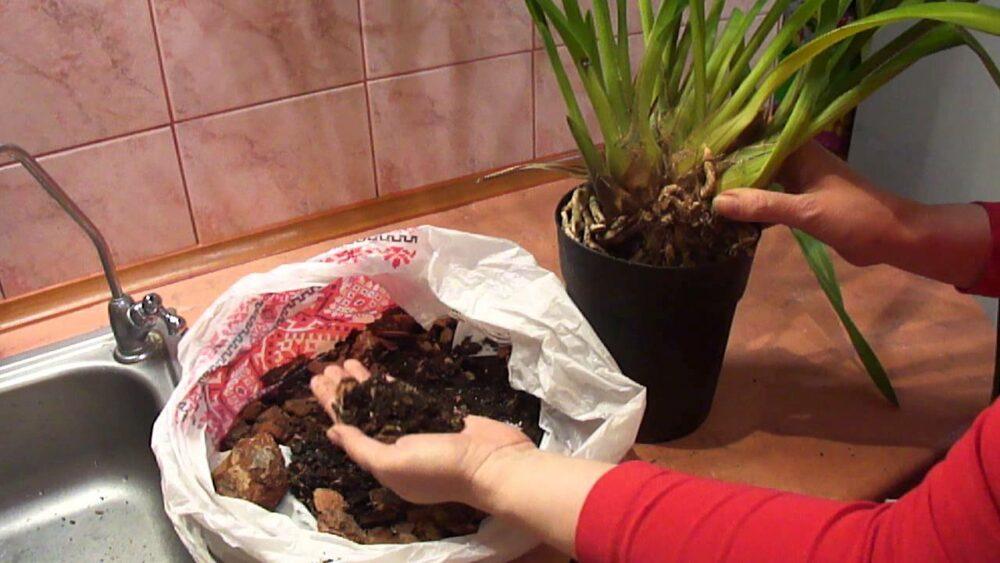What soil is needed for an orchid: features of the substrate depending on the type of flowers
 Orchids, like other epiphytic plants, receive nutrition from aerial roots. They "take root" by them, clinging to the support-tree in nature. These flowers do not need the earth as such, it serves more so that the bush does not fall over and firmly takes an upright position. But at the same time, an orchid growing at home needs to eat something and take useful substances from somewhere. For indoor specimens, special mixtures are created that absorb and give up water well, and will also nourish them. In order for a capricious epiphyte to feel good and bloom regularly, it is important to know what kind of soil is needed for an orchid. Many growers prepare the soil on their own, including for these plants. Knowing what to mix with what, it will not be difficult to do this.
Orchids, like other epiphytic plants, receive nutrition from aerial roots. They "take root" by them, clinging to the support-tree in nature. These flowers do not need the earth as such, it serves more so that the bush does not fall over and firmly takes an upright position. But at the same time, an orchid growing at home needs to eat something and take useful substances from somewhere. For indoor specimens, special mixtures are created that absorb and give up water well, and will also nourish them. In order for a capricious epiphyte to feel good and bloom regularly, it is important to know what kind of soil is needed for an orchid. Many growers prepare the soil on their own, including for these plants. Knowing what to mix with what, it will not be difficult to do this.
When choosing or mixing soil, it is also important to consider which group your orchid belongs to. Although epiphytic flowers are most often grown in apartments, there are also terrestrial orchids. For them, the composition of the soil mixture will be somewhat different.
See new types of orchids with name and photo.
Substrate composition for epiphytic orchids

Instead of pine bark, you can use oak or birch bark.
The bark is the main component of soil mixture for epiphytes, and you can keep moisture in it longer by adding a little moss and charcoal. The latter, moreover, will cleanse the soil of harmful bacteria.
What soil is needed for a terrestrial orchid?
 Since in nature such flowers do not grow on a tree, but in the ground, the substrate in the pot must also contain it. In this case, it is he who acts as the main component of the mixture, and the bark is already a secondary, additional, "ingredient". The soil should be light, but nutritious, with the addition of organic components. The ground orchid will take food from the soil, so you need to make it saturated with trace elements.
Since in nature such flowers do not grow on a tree, but in the ground, the substrate in the pot must also contain it. In this case, it is he who acts as the main component of the mixture, and the bark is already a secondary, additional, "ingredient". The soil should be light, but nutritious, with the addition of organic components. The ground orchid will take food from the soil, so you need to make it saturated with trace elements.
In apartments, you can most often find terrestrial orchids papiopedilum and cymbidium.
The following components should be included in the substrate for these plants:
- some sod land;
- deciduous humus;
- a small part of the pine bark;
- peat.
You can add fern roots as an additional source of nutrition, charcoal will serve as an antiseptic.